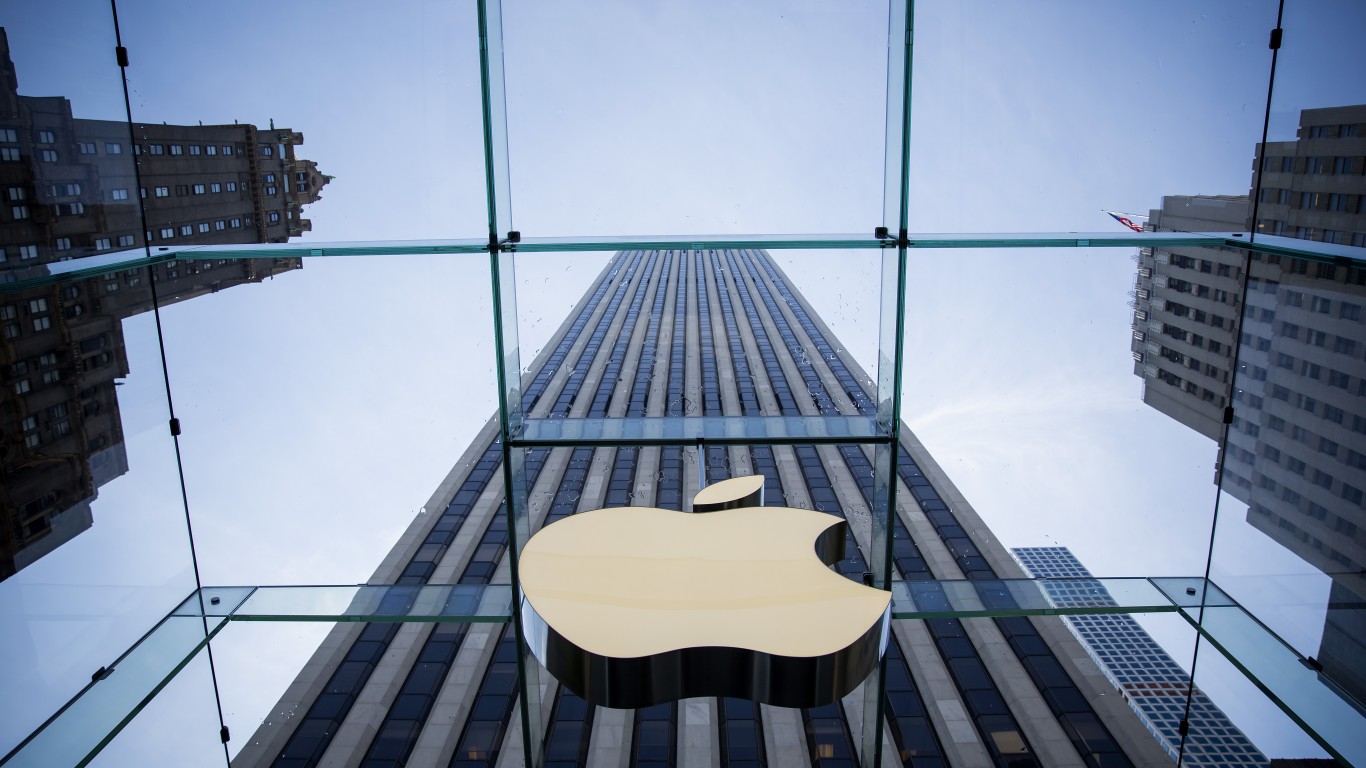Technology
What's Up With Apple: Always-On iPhone Coming, Bullish Forecast and More

Published:

Among the features rumored to be included in the next Apple Inc. (NASDAQ: AAPL) iPhone is an always-on display, similar to the same feature on the Apple Watch. The trick, of course, is to make sure that the iPhone’s battery and power management system are up to the task.
In his weekly newsletter, Bloomberg’s Mark Gurman runs through a list of likely changes due out in the fall: “Expect a faster A15 chip, smaller notch, a new display for better battery life and the potential of an Apple Watch-like always-on mode and a 120Hz refresh rate and upgrades to video recording.” An always-on display implies that Apple will use a display technology known as LPTO (low-temperature polycrystalline oxide) that can constantly adjust the display’s refresh rate to conserve battery life.
After equity markets close on June 27, Apple will report financial results for its fiscal third quarter. The current estimate for total sales is $73.12 billion and earnings per share of $1.00. For the fiscal year ending in September, Apple’s sales are expected to improve by nearly 30% year over year, and forecast earnings of $5.18 per share are nearly 58% higher than in the company’s 2020 fiscal year.
As of last Friday’s closing bell, Apple stock had gained more than 10% for the calendar year to date, third-highest among the so-called FAANG stocks (Facebook, Apple, Amazon, Netflix and Google). Google parent Alphabet has added 45% to its share price this year, and Facebook has added 25%. Amazon has added almost 10%, and Netflix has dipped by nearly 2%.
Gene Munster, a long-time Apple bull at Loup Ventures, had predicted earlier this year that Apple would be the best-performing FAANG stock this year. Last Friday, Munster said that prediction “will likely be wrong.” However, Munster also expects Apple to be the best performer of the five for the rest of the year.
Munster does not expect Apple to reach “demand supply equilibrium for Mac and iPad” until the fiscal fourth quarter. That, he says, is based on Apple’s guidance on its March quarter earnings call of a $3 billion to $4 billion combined headwind due to supply constraints in those two segments of Apple’s business.
Demand for Mac and iPad, however, was still stronger than supply at the end of the June quarter, and “we see the positive demand tailwind as much stronger and more sustainable than any supply headwinds.”
Finally, in his Sunday newsletter, Bloomberg’s Gurman also discussed Apple’s planned “buy now, pay later” (BNPL) initiative with Goldman Sachs. According to Gurman, the Apple Card the two companies introduced in 2019 is the same as it ever was. Neither have the two firms “managed to deploy the card outside of the U.S., … upped its reward program, nor … added some common benefits like enhanced warranty protection.” The Apple-Goldman partnership hasn’t met expectations for a competitive card offering, and the partners need to move more quickly and decisively if they expect to compete in the already highly competitive BNPL space.
Thank you for reading! Have some feedback for us?
Contact the 24/7 Wall St. editorial team.